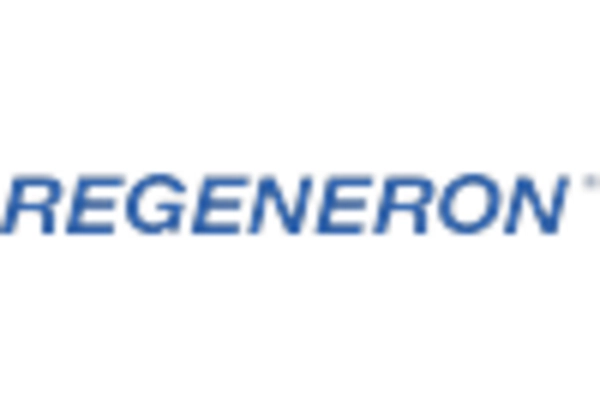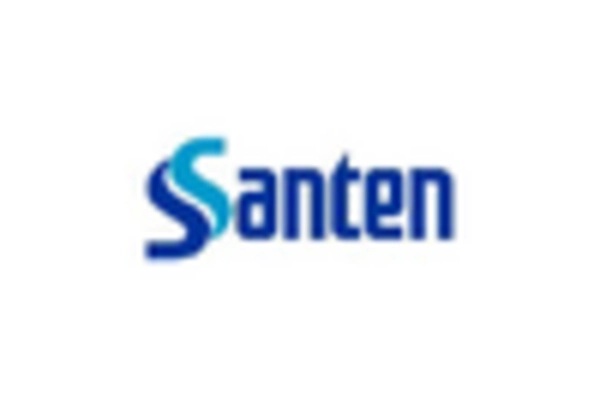Rising Prevalence of Retinal Disorders
The increasing incidence of retinal disorders in the GCC region is a primary driver for the retinal drugs market. Conditions such as diabetic retinopathy and age-related macular degeneration are becoming more prevalent due to lifestyle changes and an aging population. According to health statistics, the prevalence of diabetes in the GCC is estimated to be around 20%, significantly raising the risk of diabetic retinopathy. This growing patient population necessitates the development and availability of effective retinal drugs, thereby propelling market growth. Furthermore, the rising awareness of eye health among the public is likely to lead to earlier diagnosis and treatment, further stimulating demand within the retinal drugs market.
Rising Awareness and Education on Eye Health
There is a growing emphasis on eye health education in the GCC, which is likely to influence the retinal drugs market positively. Public health campaigns aimed at raising awareness about retinal diseases and their consequences are becoming more prevalent. As individuals become more informed about the importance of regular eye examinations and early detection of retinal disorders, the demand for retinal drugs is expected to increase. This heightened awareness could lead to a larger patient base seeking treatment, thereby driving market growth. Additionally, healthcare providers are increasingly focusing on patient education, which may further enhance the uptake of retinal drugs in the region.
Growing Investment in Healthcare Infrastructure
The GCC region is experiencing substantial investment in healthcare infrastructure, which is positively impacting the retinal drugs market. Governments are prioritizing healthcare improvements, leading to the establishment of advanced medical facilities and specialized eye care centers. This expansion is expected to enhance access to retinal treatments and increase the availability of retinal drugs. For instance, the healthcare expenditure in the GCC is projected to reach $100 billion by 2025, reflecting a commitment to improving health services. As healthcare facilities become more equipped to handle retinal disorders, the demand for effective retinal drugs is likely to rise, further driving market growth.
Technological Advancements in Drug Delivery Systems
Innovations in drug delivery systems are transforming the retinal drugs market, enhancing the efficacy and safety of treatments. Advanced delivery methods, such as intravitreal injections and sustained-release implants, are being developed to improve therapeutic outcomes for patients with retinal diseases. These technologies allow for targeted delivery of drugs directly to the retina, minimizing systemic side effects and improving patient compliance. The market is witnessing a shift towards these advanced systems, which could potentially increase the overall market size. As a result, pharmaceutical companies are investing heavily in research and development to create more effective retinal drugs, indicating a promising future for the retinal drugs market.
Increased Collaboration Between Pharmaceutical Companies and Research Institutions
Collaborative efforts between pharmaceutical companies and research institutions are fostering innovation in the retinal drugs market. These partnerships are essential for the development of new therapies and the optimization of existing treatments. By pooling resources and expertise, stakeholders can accelerate the research and development process, leading to the introduction of novel retinal drugs. Such collaborations are becoming increasingly common in the GCC, where the focus on research is intensifying. This trend suggests that the retinal drugs market may see a surge in innovative products, enhancing treatment options for patients and potentially expanding the market.

















Leave a Comment